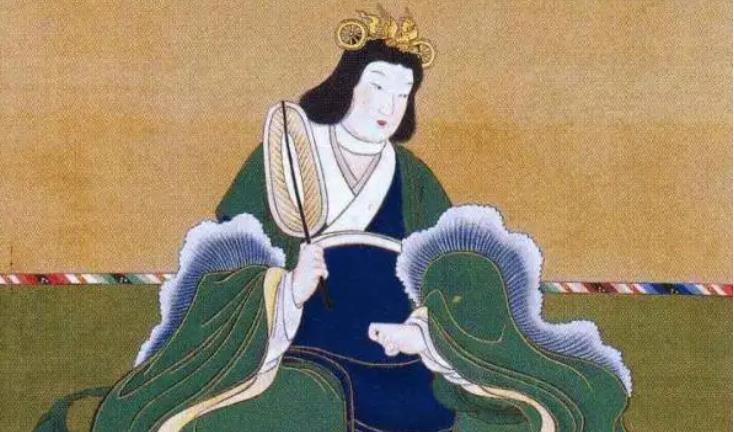第一部分:浅谈历史视频资源在历史教学中的作用
浅谈历史视频资源在历史教学中的作用
重庆市綦江区古南中学
邓先华
电话:***历史课堂教学中,历史影视资源的开发和利用,可以激发学习兴趣,提高课堂实效; 可以激活学生思维,实现师生互动,培养探究意识; 它可以再现历史场景,让学生对历史有更直观的感受,有利于学生回到历史,更好地理解历史; 能够引起情感共鸣,传承人文情怀,感受历史的神韵和神韵,实现历史的教育功能。
一是利用视频资源引入疑点,激发学习热情。 每个人都很好奇,尤其是初中生。 在历史学习中,调动学生的好奇心,引发学生的提问和思考,会给课堂教学带来意想不到的效果。 在讲授九年级世界史第一卷“明治维新”课时,我从纪录片《大国崛起》中挑选并编辑了日本崛起的介绍。 对各个海上强国崛起的图解讲解深深吸引了同学们。 当片中被问到日本这个小岛国时:“是什么让曾经的西方列强侵略目标的日本转型为海上强国?” 学生们从对世界强国崛起的好奇转向对日本实力的好奇。 渴望探究其中的原因,老师趁机引导学生走进日本“明治维新”课中寻找答案。 学生的兴趣被点燃,思维被激活,整个课堂表现出浓厚的兴趣和积极性,极大地提高了学习的有效性。
二是利用视频资源激发兴趣,培养探究意识。 初中生喜欢看影视剧,具有崇尚英雄历史人物的特点。 因此,我在教授七年级中国历史上册《青铜工艺的杰出成就》课时,为了激发学生学习青铜工艺的兴趣,我从学生最喜欢的话题入手。 电视剧《隋唐英雄》精心挑选、剪辑了裴文清在宫前为隋炀帝举铜鼎的片段,供学生观看。 当学生们看到裴文清举起巨大的青铜鼎时,都被吸引了,产生了兴趣。 强烈震撼,惊叹于裴文清的神力,同时也直观地感受到鼎的威严及其在古代生活中的重要地位。 然后顺势提问“这是什么电视场景?裴文清举起的这个宝物是什么,它是如何制作的,有什么重要价值?”,从而激发学生强烈的学习和探究兴趣,介绍本课的学习内容。
三是利用视频资源激活思维,引发情感共鸣。 我在教授七年级中国历史课《张骞出使西域》时,为了让学生更好地了解张骞出使西域的艰辛,了解他敢于冒险的优秀精神品质勇于开拓,忠于祖国,我精心剪辑了他逃离西域的视频。 匈奴在大漠中逃亡,披头散发,归来迎接汉武帝的感人一幕。 同学们看完后热泪盈眶,引发情感共鸣,为张潜的坚强意志和战胜一切困难的精神所折服。 然后,他问道:“同学们从这段视频中看到了什么、感受到了什么?” 同学们的思维火花被点燃,纷纷起身介绍自己的所见所感。 课堂活跃起来,学生的学习主动性和积极性被充分调动起来。 接下来,老师火上浇油:“张骞忠诚祖国、勇于开拓、敢于冒险的精神值得我们铭记和学习。那么,让我们行动起来,用我们的笔和文字来描绘张骞。”钱氏出使西域的路线“吧”。 张潜的勇气和克服困难的精神感染了全体同学。 他们的学习变得更加自觉、主动,探索变得更加顺利、有效。
四是利用视频资源再现历史,贴近历史真实。 以史为鉴、以史解理,历史教学就是对过去事件的研究。 从过去事件的演变中,我们可以发现规律,认识事物,指导未来的发展。 因此,在学习历史时,我们应该尽力为学生提供有说服力的资源,让学生从接近历史现实的资源中感知和理解历史。 在教授九年级班级第一册《第一次世界大战》时,为了让学生了解战争的残酷,培养他们反对战争、珍视和平的意识,我挑选并剪辑了《第一次世界大战》的纪实视频。凡尔登”。 让学生看到士兵们在泥泞中背负重物,在硝烟中失去宝贵的生命,看到肉搏战中的鲜血,尸体遍布田野,痛苦地呻吟,然后看到废墟和弹痕被摧毁的场景通过战争。 同学们身临其境地感受到战争的残酷、生命的脆弱和珍贵,对战争的破坏性和危害性有了更深刻的认识。 “痛恨战争、珍视和平”的意识油然而生。
历史视频资源在历史教学中的运用越来越丰富。 我们历史教师必须善于开发、精心选择、趋利避害、巧妙利用,才能更好地发挥历史视频资源在历史课堂教学中的作用。
第二部分:浅谈历史人物在历史教学中的作用
浅谈历史人物在历史教学中的作用
历史涵盖的范围非常广泛。 无论是从物质、精神方面,还是从政治制度、经济发展、思想文化等方面,都离不开某些历史人物,特别是不同历史时期对社会发展有重要影响的人物。 数字。 关于历史人物在历史教学中的作用,我们谈以下几点:
首先,历史人物是引入课堂的好材料。 历史人物贯穿每一个历史时期,所以找一些涉及语文、思想道德课的人物,或者一些历史故事,这样才能画好历史事件。 比如,谈到秦朝统一后如何进行制度创新,我们可以先从秦始皇开始介绍。 说到改革开放的内容,我们可以用一首歌颂邓小平的歌曲——《春天的故事》来介绍,从而把改革开放的内容渗透到内部,从而加深印象。
其次,可以构建以历史人物为中心的一定历史时期的知识框架。 比如,谈论新民主主义革命时,我们可以以毛泽东为中心,串起这一阶段的历史事实。 从毛泽东参加中国共产党第一次全国代表大会开始,中国共产党第一次全国代表大会的任务是领导工人运动,再到中国共产党第二次全国代表大会提出“打倒列强,消灭军阀”。 自然就过渡到国共第一次合作,再到国共第一次合作失败。 之后,毛泽东创建了第一个农村根据地——井冈山革命根据地。 革命根据地的建立,奠定了与国民党长达十年的对峙局面。 这十年间,因为内战,日本得到了侵略中国的机会。 中华民族危机加深,于是国共两党有了第二次合作,共同抗日。 抗日战争胜利后,就有了胜利后毛泽东领导的解放战争。 解放战争结束后,新中国成立直至今日。 以上是从政治角度纵向连接的,也可以从经济思想角度纵向连接的,比如经济“三大转型”、“一五”、“大跃进”,等等,还有思想上的“百花齐放、百家争鸣”,到后来的“文化大革命”等等,比如以列宁为中心就可以了解苏俄社会主义革命的历程、以孙中山为中心可以串联起民国时期的史实等等。
第三,可以调动学生学习历史课的兴趣。 有的学生在影视剧或课外书等其他方面听说过一些人物的名字,但没有全面的了解。 如果在讲课中提到它们,学生就会有一种“似曾相识”的感觉。 兴趣会大大增加。 比如说到二战,只要提到希特勒,大多数男生都会感兴趣,而且感兴趣的时候记忆效果非常好。
四是适时运用历史人物小故事活跃课堂气氛。 比如,在谈论唐朝的政治制度时,就可以提到学生们比较熟悉的武则天。 在谈到1911年辛亥革命的影响时,我们可以将其与学生们非常感兴趣的末代皇帝溥仪的经历进行比较。他三岁登基,六岁登基。 1911年辛亥革命推翻了清政府。 尽管拥有一定的经济和政治特权,但溥仪在1922年结婚,娶了一位皇后和一位妃子。 皇后是婉容,妃子是文绣,但后来文绣提出与溥仪离婚,让学生很容易明白专制特权的终结。 以前高高在上的皇帝都想着怎么粘着,但到了民国,却是妃子“赐予”的。 “休”,让学生在听历史人物故事的同时记住核心内容。
第五,可以对学生进行爱国主义教育。 从古至今为中华民族作出伟大贡献的人不计其数,其中有军事将领、革命家、政治家、科学家、思想家等,如岳飞、林则徐、吉鸿昌、张自忠、杨洁篪等。景瑜、周恩来、钱学森、邓稼先、李大钊等等,知道他们是从维护国家独立的角度爱国,还是从国家发展的角度,让学生知道我们现在的和平是我们的祖先用鲜血买来的和汗水,我们一定要珍惜今天来之不易的幸福生活,需要强烈的爱国主义精神,为中华民族的伟大复兴不断努力。
第六,同时通过历史人物的学习,教育学生要有刻苦学习的精神。 古往今来,有很多值得我们学习的典范。 比如,谈到古代科学技术的发展,李时珍的《本草纲目》是我国中医的伟大经典。 在李时珍看来,“读万卷书”固然需要,但“行万里路”更不可缺少。 因此,他不仅“采百石”,还“采访四方”,深入调查。 他穿上草鞋,背着药篓,远行山野,拜访名医儒家,寻找民间验方,观察采集药样,最终完成了《本草纲目》。 。 宋应星的《天工开物》、爱迪生发明灯泡的过程,都体现了他们努力进取的精神,这也是生活在这个年龄段的中学生所缺乏的精神。
关于历史人物在历史教学中的作用,我首先总结这六点。 有很多方面我可能还没有发现。 希望老师们能够指点一下。 谢谢你!
2015 年 10 月 8 日
第三部分:浅谈历史资料在素质教学中的作用
历史教科书材料教学经验
景前中学
邢群娥
新高中历史教材每一章都附有相应的、丰富的历史资料,供教学参考。 这些史料可以帮助学生在学习中更加准确地掌握历史线索、历史事件和历史人物。 教材中的材料可分为两类:文字材料和图文材料。 文字材料主要选自历史文献、经典著作、报刊杂志、名人选集、地方史志、考古报道、文学作品等。图表材料主要由地图、图纸、照片、统计图表等整理而成。与旧教材相比,新高中历史教材最大的特点就是历史资料的增加。 可见,新教材注重培养学生的能力。 因此,在教学中,教师必须引导学生仔细阅读教材,从教材所蕴含的信息中找出规律性的知识,从而培养学生的科学思维和方法,培养学生的创新意识和探索精神。精神。 任务。 如果我们在组织教学时不能充分利用这些历史材料,就无法提高学生分析问题、解决问题的能力,更谈不上提高学生的应试能力。 教师处理历史材料的能力是历史学科教学最基本、最重要的能力之一。
近年来,全国高考历史试卷的材料分析题采用了文字材料、历史表格材料和图表材料。 题目角度灵活、能力层次清晰、答案简单凝练,有效考验了考生对书本知识的掌握程度和综合分析问题、解决问题的能力。 如果学生不具备较强的阅读、理解、分析材料的能力和灵活运用知识的能力,就无法思考材料提供的有效信息和教材的相关内容,理清思路。因此,过去仅仅依靠死记硬背是不够的。
获得高分的日子已经一去不复返了。 当前,史料问题的解答既是教师教学的重点,也是学生学习的难点内容。 如何突出这个重点,突破这个难点,如何利用好历史教材中提供的各种材料来组织教学,使教学达到举一反三的效果,是摆在我们历史教师面前的重要课题。 。 在我们的教学中,对于此类题型,需要了解题型的变化趋势,掌握题型的特点,分析解题规律,进行题型训练,使学生提高答题能力。这类问题。
下面我们以书面材料为例来说明其在素质教学中的重要性。
曾国藩说:“购洋之物尤有道理,购完后,由访帘的智者、能工巧匠操练而后建造,不出一二年,轮船便为中外官员所用。”人和人,可以镇压。要曲折,可以勤奋而深远。”
曾国藩的这番话,体现了洋务派治国以自强为关键、自强以练兵为基础、练兵以先造兵器为基础的思想,即“学”的思想。向外国人学习技能,增强自身实力。” “今天的和平协议已经完成”这句话反映了西化的背景。 “能镇压外事。年法,指太平天国;年,指年军。能勤政,致远。沁园略,指为皇帝解除外患。” 达到办外事的目的。 我在组织教学时,首先让学生阅读材料,分析材料,让学生自己发现问题,找出自己的兴趣,讨论问题,充分发挥教师的主导作用和学生的主体作用,实现师生互动、生生互动。 然后根据本节的材料内容和知识点,总结分析了四个问题:
1、“今日和约已成,中外无往来”体现了洋务运动的背景? “和平”是指第二次鸦片战争,西方列强强迫清政府签订《天津条约》、《北京条约》等不平等条约; “中外贸易”是指第二次鸦片战争期间开放的十一项贸易协定。 港口,外国侵略势力扩大到
沿海省份并延伸至内陆地区。 因此,洋务运动是在太平天国运动等“内忧外患”和西方资本主义经济侵略的“外患”的特殊背景下产生的。
2、“抑毛捻”、“勤奋致远”体现洋务使命的目的是什么? 洋务党的目的是利用西方先进的科学技术来维持清政府的封建统治。 由于其阶级局限性,地主阶级洋务派发动的洋务运动只学习了西方的科学技术,却没有学习西方的政治制度,没有从根本上解决问题,这就决定了洋务运动必然失败。
3.根据课本内容,找出洋务派采取了哪些具体措施? 洋务派打着“自强不息”的旗号,采用西方先进技术,建立了一批军事工业; 他们打着“求富”的旗号,创办了一批现代民用工业; 谋划海防,建立北洋、南洋、福建三大海军; 他们建立了三个海军:北洋海军、南洋海军和福建海军。 建立新型学校,培养文明、军事、科技人才; 还选派留学生和进修生出国留学。
4.根据本节内容,谈谈你对洋务运动的评价。 洋务派引进了一些西方近代科学技术,培养了一批近代科技人才,客观上对瓦解国家的封建经济起到了一定的作用,从而刺激了中国资本主义的发展,也对对外扩张起到了一定的作用。外国经济力量。 阻力效应。 然而,洋务运动仅仅依靠引进西方先进技术和设备,没有触及封建政治制度。 这是洋务运动失败的根本原因。
通过提出以上四个问题,学生可以仔细阅读材料,理解材料的含义,抓住材料的关键词,并通过将材料内容与本节的相关内容联系起来进行思考,从而能够全面、直观、准确地掌握它。 洋务运动的背景、内容、目的及评价。 这样,本课的主要知识也就通过解决这四个问题来体现。同时
还培养学生分析比较、综合总结、解决问题的能力和语言表达能力。
简而言之,历史就是过去的现实,通过人们对当时现实的记录或历史遗迹的发现来反映。 只有通过对史料的分析或者对历史文物的了解来认识历史,才能准确把握历史。 因此,阅读和了解历史资料并不意味着了解一点点,而是要求学生真正理解和理解资料,并最大限度地从资料中获益。 获取有效信息,并根据所学知识对相关问题进行解释和论证。 作为一名历史教师,无论是教授新课程还是指导复习,都必须注重理解教学。 既不能死记硬背知识,也不能盲目追求高难度的能力训练。 应注重培养学生的归纳能力。 、比较、综合、总结历史知识。 在教学过程中,教师适当地针对历史文献资料提出一些有针对性的问题,对学生进行启发式教学,从多角度、多层次培养学生解决问题的能力。 技能,使学生最大限度地发挥潜力,分析历史背景,从宏观角度理解材料内容,确定中心问题,解决中心问题,把握解题方向,区分答题层次、注意限制范围,充分发挥学生的思维个性,准确组织答题内容,从而提高学生的应试能力。
第四部分:浅谈历史插图在历史教学中的作用
浅谈历史插图在历史教学中的作用
历史插画教学是历史直观教学的重要组成部分。 主要通过课本中的插图和教师收集制作的图片、绘画进行教学。 由于历史的“过去性”,它谈论的是过去无法直接看到或再现的事情。 教师要给学生一种历史感、历史形象,让“过去”清晰地再现在学生的观念中。 ,需要使用历史插图,这是历史直观教学的重要组成部分。 经过多年的教学历程,我总结了以下插画教学方法,供大家参考。
(1)描述方法
这是一种以图文并茂为主、语言演示相结合的教学方式。 例如,《受迫害的犹太人》这幅作品表现了犹太妇女儿童被纳粹党赶走和屠杀时惊恐举手的悲惨处境。 原本难以理解的“法西斯主义”概念,被同学们直观地感受到了。 图中犹太人的悲惨处境,让这个晦涩的词一下子就变得容易理解了。 除了感染学生爱恨情仇外,教师还可以收集一些有关古建筑工程插图的诗文,培养学生的鉴赏能力。 “赵州桥”造型优美,结构新颖。 这很像古人所说的“初月云,雨后彩虹”。 这座古建筑可以用宋代杜德源的“箭直千人过,驿马驰骋天下”、明代朱万之的诗来增色不少。 “百丈彩虹横过水面,新月当空升起”。 艺术感染力。
(2)关联法
例如,在演示《商代戴手铐的兵马俑》时,可以引导学生想象不愿屈服的奴隶形象,深刻揭露奴隶被埋的罪行。 在谈论“圆明园烧掠遗迹”时,可以引导学生从两个方面进行想象。 一方面,虽然只剩下残砖断瓦,但依然可以想象圆明园的辉煌。 这与1861年法国大作家雨果对圆明园的评价有关:“你只要想象一下,它是一座像月宫里的城堡一样令人着迷的建筑。圆明园(指圆明园)皇宫)就是这样一座建筑。“花园里的宏伟壮丽的景象是我无法形容的,也超出了欧洲人的想象。” 另一方面,也是西方侵略者对人类文化野蛮破坏的见证,也是古代文明“落后就要挨打”的证明。
社团可以开阔学生的视野,提高他们的想象力。
(3)启发式
历史插图可以使较为抽象的历史事实或意义具体化。 例如,对于颜立本的《行车图》的演示,可以组织以下问题进行讨论,从而启发学生了解唐初对少数民族的绥靖政策以及唐与西藏的友好关系。
①战车上坐着谁?
②唐太宗为何接待吐蕃使者?
③从这幅画中可以反映出什么社会现实? 尝试用一个例子来说明。
又如1927年的德国漫画《关于危机的预言》就说明了欧洲战争根源形成的背景。 整理以下问题来启发学生:
①山下这些人的处境意味着什么?
②悬崖上的人们悠闲地吃晚饭是什么意思?
③这幅漫画暗示了什么? 这和德国成为欧洲战争的策源地有什么关系呢?
(4)悬念法
历史上有许多未解之谜。 有时老师可以提出问题,让学生以后自己找到答案。 如《金字塔与狮身人面像》,可以问以下问题:
① 4600多年前埃及人建造金字塔时,巨石重达5吨。 当时没有起重机、汽车或其他机械。 你认为他们用什么工具来运输它们?
②建造金字塔时,没有水平仪,没有动力装置,也没有现代测量手段。 5.29万平方米的塔基如何勘测平整?
有兴趣的学生通常会关注这些材料,进一步探索历史的奥秘。
(5)比较法
此方法适合复习和巩固。 《一战前的欧洲》和《战后的欧洲》两张图片可以通过对比来了解战后同盟国和协约国两大阵营的变化,德国、奥匈帝国、沙皇俄国、奥斯曼土耳其。 帝国灭亡,波兰等八个国家崛起。
复习课上可以对比《慈禧太后万寿庆典》《黄海海战》《日本旅行团启程欧美》等画面。 每幅画的特点都清晰地反映了黄海海战中清政府的腐败和中国军队的无能。 明治维新带来的影响、日本的实力,学生自然会了解历史发展的脉络。
(6) 总结法
采用概括方法的图解教学一般需要教师自己画图或者从网上收集各种数据图片。 比如《世界古代文明》这幅画,上面就清晰地标注了各国名称和主要河流的名称。 学生一看就清楚明白,对世界四大文明古国的名称、发源的流域、地理位置有一个非常完整的概念。 谈明代北京城的建设,可以绘制出金、元、明时期京都的沿革图,理顺金中都、元大都的关系朝,又是明朝的北京城。 回顾辽、宋、夏、金、元的历史,可以绘制出五朝变迁图,让学生将所学知识进行综合、系统化。
图解教学是在任何学校、任何条件下培养学生学习兴趣的实用教学方法。 Its psychological factors are mainly to fully achieve the realm of re-creation of historical phenomena through image, enlightenment, organization, etc., which can improve students’ thinking ability, memory ability, analysis and comprehensive ability, and carry out historical materialism and patriotism thoughts. Education, etc., so constantly exploring and summarizing the graphic teaching method is very beneficial for improving history teaching.
Part Five: The Role of Film and Television Works in History Teaching
The role of film and television works in history teaching
Content summary: Create teaching situations in teaching to stimulate learning interest; reproduce historical scenes and break through key and difficult points; deepen knowledge understanding and carry out ideological education: mobilize students’ audio-visual senses, stimulate learning interest, optimize classroom teaching, and improve teaching efficiency.
Keywords: radio, film, television, film and television works, documentaries
With the rapid development of radio, film and television, there has been a large increase in film and television works and recordings of historical themes in recent years, becoming a very important and easily accessible history course resource. Documentary documentaries can generally reproduce a certain period of history truly and vividly, depict certain historical figures, and narrate certain major historical events. They play an irreplaceable role in students’ understanding and appreciation of history, and are audio and video resources that should be used primarily. Secondly, film and television works that are relatively close to historical reality and entertaining historical-themed film and television works, except for those that seriously violate historical facts, are also resources that can be selectively utilized, because they can more or less provide society with a certain historical period. Life styles are beneficial for students to observe and feel history from different angles, and enhance their sense of history and ability to understand history. Appropriate use in teaching can mobilize students’ audio-visual sense, stimulate learning interest, optimize classroom teaching, and improve teaching efficiency.
1. Introduce new courses – create teaching situations and stimulate learning interest
Junior high school students are in a period of intellectual and psychological growth. Their curiosity about new things and thirst for knowledge require our history teachers to actively create conditions to stimulate students’ learning enthusiasm, initiative and consciousness, so that they are willing to learn and love learning. 。 As the saying goes: “A good beginning is half the battle.” Others say: “If the teacher cannot form a climax within three minutes of class, the class will be an unsuccessful class.” This shows the importance of introducing new courses. Film and television works with historical themes have the characteristics of combining shape, sound, color, emotion and meaning. They can easily attract and infect students and help to arouse their interest and attention in learning.
When I was explaining “The Rise of the Whole Nation’s Anti-Japanese War”, I started to play a segment of the TV documentary “Nanjing Massacre”. This film is a documentary filmed to commemorate the 50th anniversary of the victory of the Anti-Japanese War and the World Anti-Fascist War. It truly records the events of 1937 by interviewing survivors, witnesses, veterans of the Japanese invaders and a large number of historical relics of the Nanjing Massacre. The historical fact that the Japanese aggressors massacred more than 300,000 people in Nanjing exposed the barbaric and brutal nature of Japanese militarism and accused the Japanese aggressors of their heinous crimes. A historical picture depicting the Japanese invaders massacring Chinese people and ravaging our great country. With this scene, teachers no longer need to speak, but it can also arouse the resonance of students’ thoughts, achieving the art of “the artistic conception is born at the beginning of class” realm.
2. Teach new lessons – reproduce the historical picture, break through the key points and difficulties
Teaching focus refers to the knowledge content and problems that play a key role and main role. Teaching difficulties refer to knowledge that is difficult for students to master and understand and problems that are difficult to solve. Whether the focus of teaching materials and difficult problems are solved is related to the quality of classroom teaching. 。 Movies and TV, as teaching media, bring past events and historical facts into the classroom through the instantaneous reappearance of historical events, historical figures and historical phenomena. As if being on the scene, it can not only improve students’ interest in learning history, but also enable students to better understand the content of the textbook and historical events, leaving a deep impression on students, which is conducive to the understanding of the key knowledge of the textbook and the breakthrough of difficult knowledge .
For example, when teaching the Sino-Japanese War of Sino-Japanese War, many students pointed out that at that time, China’s overall economic and military strength was not inferior to that of Japan. In the later period of the Westernization Movement, the Qing government established three navies, especially Li Hongzhang’s Beiyang Fleet. They were relatively excellent, and the soldiers of the Beiyang Fleet, such as Deng Shichang and Ding Ruchang, fought the enemy bravely. Why did the Sino-Japanese War of Sino-Japanese War of 1895-1995 end in failure? For this reason, I played a few scenes in the movie “The Sino-Japanese War”: Deng Shichang and other officers and soldiers of the Beiyang Navy bravely fought against the enemy at sea and died heroically; The Empress Dowager prepared for the 60th birthday celebration and the emperor’s wedding regardless of the danger of the nation; Cixi embezzled naval military expenditures to build the “Three Seas” and Qingyi Garden. After thinking about it, and connecting the footage of Li Hongzhang retreating from the war and Empress Dowager Cixi’s “60th birthday”, it is not difficult to draw a conclusion: the decadent rule of the Qing government was the root cause of the defeat of the Qing government in the Sino-Japanese War of 1894-1895.
3. Classroom summary – deepen knowledge understanding and carry out ideological education
Classroom summary is the behavior that teachers use artistic means and methods to summarize and transform and sublimate the knowledge and skills they have learned after the stage learning tasks or new lessons are over. It is an important part of classroom teaching. It should not be just a mechanical reproduction and simple repetition of the previous teaching content, but should help students clarify their thinking through a lesson study, deepen their understanding and mastery of the knowledge they have learned, and contribute to positive emotional attitudes and correct learning. The formation of values. Using historical film and television works, in conjunction with teachers’ explanations and students’ thinking, through vivid pictures and historical situations, with passion, students can be strongly infected in the soul, deeply enlightened in thought, and achieve Psychological identity, produce emotional resonance, and thus receive vivid ideological education.
For example, when teaching the lesson “Ten Years of the “Cultural Revolution”, since the current students were all born after the “Cultural Revolution” and grew up in today’s reform and opening up, they know very little about the various things that happened in that special era. Therefore, the harm that that riot brought to the whole country is also unimaginable and incomprehensible. During the teaching, I joined many students who were watching the TV series “Negative Debt”: The educated youths responded to the call and went to the border of Yunnan, a dream every ten years , the turbulent tide of returning to the city swept them back to the city, leaving behind the red land, quicksand river, rubber forest… and their children. The bomb set off a huge shock wave to the parents’ new family. The play is touching and exciting, and has aroused strong resonance among many TV viewers. It reflects the serious social consequences brought about by that revolutionary era. Through discussions and exchanges between teachers and students, and in connection with the current reality, students have a deep understanding that the Chinese Communist Party is a great party, capable of solving their own problems, and can better understand how a stable and united political situation is for the construction of our country. Important, so as to establish a sense of responsibility for consciously maintaining social stability.
Of course, film and television works using historical themes are only an auxiliary means after all, to deepen students’ understanding and experience of history. In teaching, films cannot be used as a substitute for courses, and film and television works that are seriously inaccurate cannot be played, and attention should be paid to the appropriate use of selective and purposeful use.



